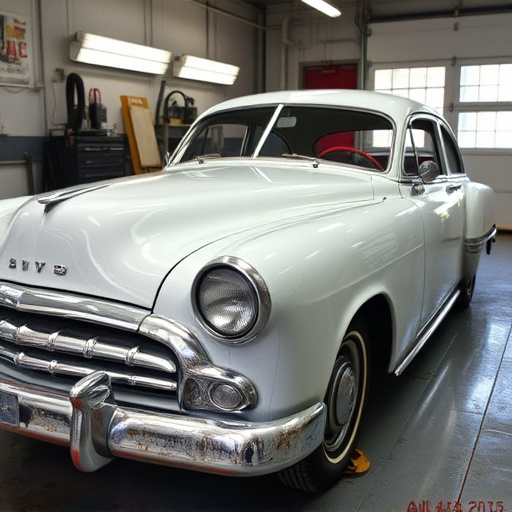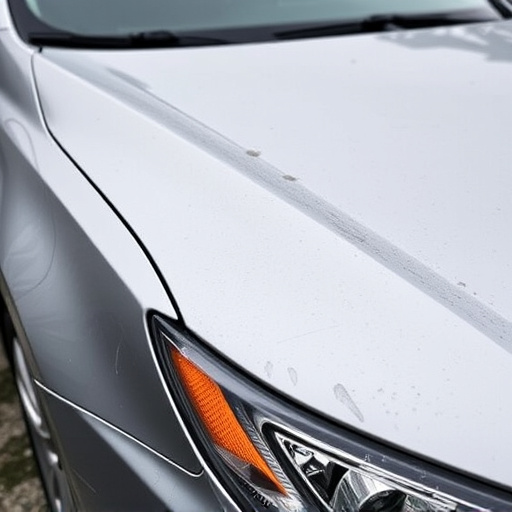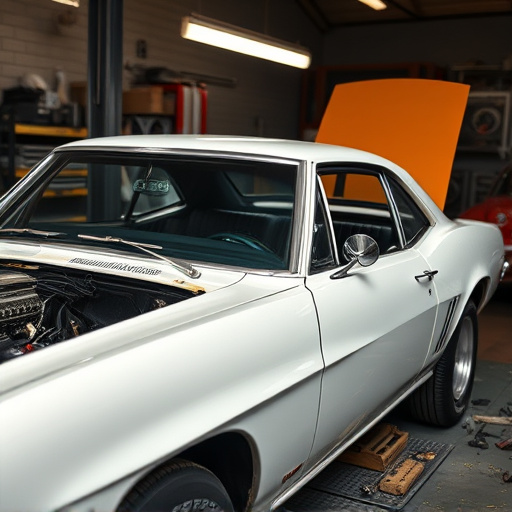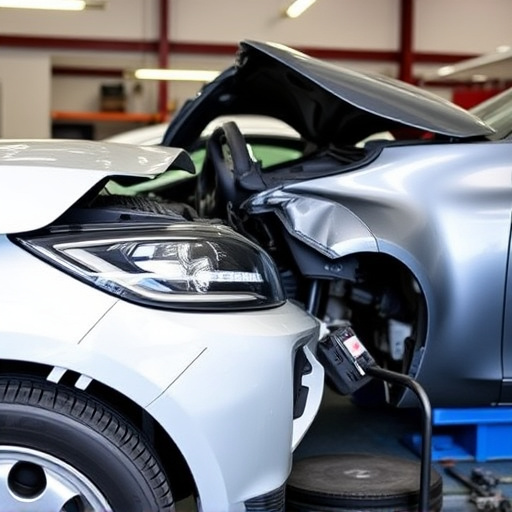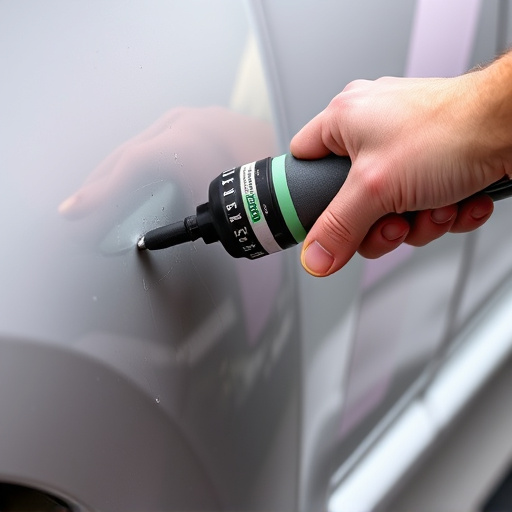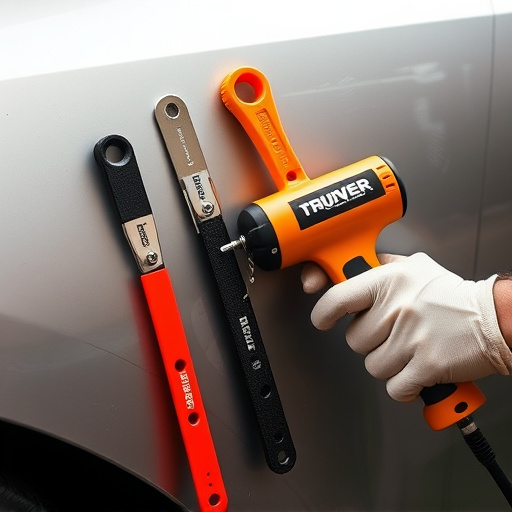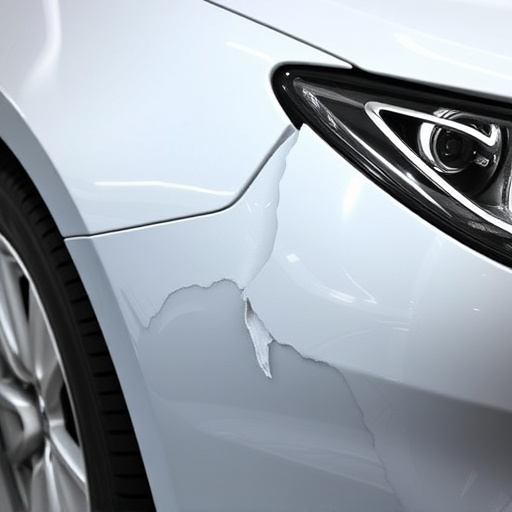Mercedes THERMOTRONIC systems, known for precise climate control, can fail due to sensor malfunctions, affecting heating/cooling efficiency and causing issues like unusual noises or system shutdowns. Regular auto maintenance helps catch problems early. Repair involves replacing faulty sensors and components, avoiding major structural damage. Diagnosing HVAC sensor issues using scanning tools is critical before repair, ensuring only affected parts are replaced. Repairs require a methodical approach, including symptom analysis, safe disconnection of the battery, component inspection, replacement/repair, reassembly, testing, and expert assistance for complex cases.
Mercedes THERMOTRONIC systems are renowned for their precision climate control, but sensor failures can disrupt this harmony. This article guides you through understanding common Thermotronic system failures in Mercedes vehicles, effectively diagnosing HVAC sensor problems, and offers a step-by-step approach to efficient repairs. Learn how to navigate the process with ease, ensuring your Mercedes maintains its optimal comfort levels. Discover expert tips for successful Mercedes THERMOTRONIC repair here.
- Understanding Mercedes THERMOTRONIC System Failures
- Diagnosing HVAC Sensor Problems in Mercedes Vehicles
- Step-by-Step Guide to Efficient THERMOTRONIC Repairs
Understanding Mercedes THERMOTRONIC System Failures

Mercedes THERMOTRONIC systems are known for their precision in climate control, but like any complex mechanism, they can experience failures. Understanding these malfunctions is crucial for effective Mercedes THERMOTRONIC repair. Common issues often stem from sensor failures, especially in the heating, ventilation, and air conditioning (HVAC) sensors. These sensors play a vital role in regulating cabin temperature by detecting inside and outside conditions, which then triggers the system to adjust accordingly.
When a sensor fails, it can lead to various symptoms like inefficient heating or cooling, unusual noises, or even complete system failure. Prompt diagnosis and repair are essential to prevent further damage. Regular auto maintenance can help identify potential issues early on, making repairs less costly and disruptive. Unlike a car collision repair, which involves significant structural damage, Mercedes THERMOTRONIC repair typically focuses on replacing faulty sensors and associated components, ensuring your vehicle’s comfort and efficiency remain intact.
Diagnosing HVAC Sensor Problems in Mercedes Vehicles

Diagnosing HVAC (Heating, Ventilation, and Air Conditioning) sensor problems in Mercedes vehicles is a crucial step before initiating any Mercedes THERMOTRONIC repair. These sensors play a vital role in regulating the vehicle’s climate control system. Common symptoms of faulty HVAC sensors include unusual temperature readings, inefficient heating or cooling, and erratic fan operation.
Mechanics often begin the diagnostic process by checking for power and signal issues using advanced scanning tools. A simple fender bender or mercedes benz collision repair may not directly impact these sensors, but they can be compromised if nearby components are damaged. Proper diagnosis ensures that only faulty parts are replaced during a thermotronic repair, saving costs and time while ensuring optimal vehicle performance.
Step-by-Step Guide to Efficient THERMOTRONIC Repairs

Repairs for Mercedes THERMOTRONIC systems can be a delicate process, but with a systematic approach, it’s manageable. Here’s a step-by-step guide to help you navigate this task efficiently:
1. Identify the Problem: Start by diagnosing the issue accurately. Check for common symptoms like poor heating or cooling performance, unusual noises, or faulty control modules. The HVAC sensor failure could be an indicator of broader system problems, so a thorough inspection is crucial.
2. Safety First: Before beginning any repair work, ensure your vehicle’s battery is disconnected to prevent electrical shocks. This is especially important with modern vehicles where multiple electronic systems are at play.
3. Demontage and Inspection: Carefully remove the faulty components, taking note of their placement and connections. Inspect the Thermotronic unit for any signs of damage or wear. Clean the area thoroughly before reassembling to ensure optimal performance.
4. Replace or Repair: Depending on the extent of damage, decide whether to replace the entire Thermotronic unit or repair specific components. Modern replacement parts are readily available through authorised dealers and specialist suppliers.
5. Reassembly and Testing: Once replaced or repaired, carefully reassemble the system, ensuring all connections are secure. Test the system thoroughly after repairs, simulating various driving conditions to verify its efficiency and reliability.
For complex cases, consider seeking expert assistance from a reputable automotive collision repair or fleet repair service. They have the specialised tools and trained technicians needed for accurate Mercedes THERMOTRONIC repairs.
Mercedes THERMOTRONIC repairs are crucial for maintaining the comfort and efficiency of your vehicle’s climate control system. By understanding the specific failures, such as HVAC sensor issues, and following a systematic approach to diagnostics and repairs, you can ensure optimal performance. This article has provided insights into navigating Mercedes THERMOTRONIC challenges, offering a step-by-step guide for efficient repairs, ultimately enhancing your driving experience in today’s digital era.
